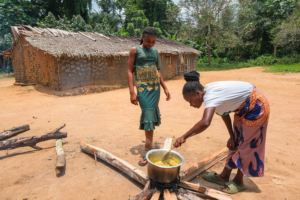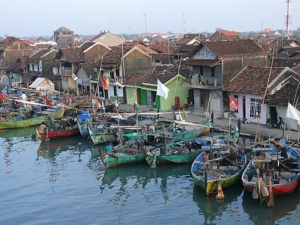 Saint Vincent and the Grenadines (32 eastern Caribbean islands and cays), a small island developing state, is a British Commonwealth parliamentary democracy, colonized in the 18th century. Slave-run plantations dominated the economy until slavery was abolished in 1834. Former slaves and immigrants provided labor until landowners abandoned estates in the early 1900s, leaving the liberated slaves to cultivate the land. Saint Vincent and the Grenadines progressed from an administrative unit of the Federation of the West Indies (1960-62) to autonomy and then finally to independence in 1979. Its population of just over 100,000 is primarily (71.2%) of African descent.
Saint Vincent and the Grenadines (32 eastern Caribbean islands and cays), a small island developing state, is a British Commonwealth parliamentary democracy, colonized in the 18th century. Slave-run plantations dominated the economy until slavery was abolished in 1834. Former slaves and immigrants provided labor until landowners abandoned estates in the early 1900s, leaving the liberated slaves to cultivate the land. Saint Vincent and the Grenadines progressed from an administrative unit of the Federation of the West Indies (1960-62) to autonomy and then finally to independence in 1979. Its population of just over 100,000 is primarily (71.2%) of African descent.
Saint Vincent and the Grenadines is an agricultural economy, although over half of its population (54.3%) is urban. Its mountainous terrain is more than two-thirds forest, with less than 13% arable land. It is home to La Soufriere volcano, which last erupted in 1979, and in addition to volcanic eruptions is also threatened by hurricanes.
Natural and External Challenges
In July 2024, the minister of agriculture for Saint Vincent and the Grenadines declared, “Saint Vincent and the Grenadines is on the brink of food insecurity. On average it has been hit by one natural disaster every year for the past five years, which has disrupted every food chain. We have experienced COVID-19, 32 volcanic eruptions, severe droughts and hurricanes.” June’s Hurricane Beryl, destroyed the country’s fisheries and lobster chain, affecting 95% of vessels and displacing a large percentage of producers and fisherfolk, along with destroying 98% of plantain and banana production.
By October 2024, however, the World Bank reported that these natural and external disasters and shocks were followed by agricultural recovery and “robust performance” in tourism. Those improvements, along with the implementation of large-scale infrastructure projects, were driving economic growth. Despite high food prices, food security concerns decreased with a decrease in inflation, and the proportion of the population experiencing severe food shortages (no food, or skipping meals, for a whole day) had declined over the year. In addition, food-vulnerable households were supported by existing social programs, including safety net payments.
Agenda for Sustainable Development
In 2015, Saint Vincent and the Grenadines committed to the United Nations 2030 Agenda for Sustainable Development, along with the agenda’s 17 sustainable development goals. SDG 2 is Zero Hunger: end hunger, achieve food security and improved nutrition and promote sustainable agriculture.
As of 2024, Saint Vincent and the Grenadines was assessed as having significant remaining challenges in meeting SDG 2, with its score “stagnating or increasing at less than 50% of the required rate.” The country was on track or maintaining its achievement only with regard to the prevalence of undernourishment and cereal yield, and its major challenge was in the prevalence of obesity. (Data were unavailable on three of the eight indicators.)
Nutrition Targets
Saint Vincent and the Grenadines has implemented ten national food and noncommunicable disease policies, with targets related to six global nutrition targets. However, the 2022 Global Nutrition Report reported the country as “off course” in meeting all the global nutrition targets for maternal, infant and young child nutrition, no progress in reducing anemia of reproductive age women and insufficient data to assess several other targets.
The FAO and Saint Vincent and the Grenadines
Saint Vincent and the Grenadines joined the United Nations Food and Agriculture Organization (FAO) in 1981. Initial support included capacity building, legislative development, formulation of policy and agricultural planning. Food security programs, technology transfer, market infrastructure and climate change resilience were later foci. Recent FAO contributions to the country have included technical support in 2022 to prepare and implement the country’s first agriculture census in 22 years and, in 2023, assistance to finalize a Fisheries Bill to manage the country’s fisheries resources.
Global Alliance Against Hunger and Poverty
In October 2024, Saint Vincent and the Grenadines joined the Global Alliance Against Hunger and Poverty. The Global Alliance formally launched in November 2024 to serve as a platform “for the development, implementation, or expedited execution of public policies aimed at SDGs 1 and 2.” Joining the Alliance was Saint Vincent and the Grenadines’ commitment to collaborate with Alliance members in addressing solutions to hunger and poverty worldwide. This voluntary membership is significant in recognizing the global challenges of hunger and poverty and the importance of a collaborative and mutually supportive response to those challenges.
– Staff Reports
Photo: Flickr









